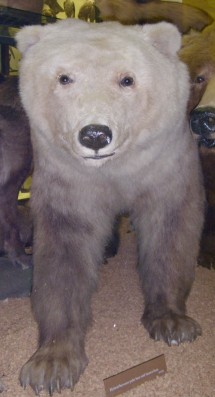
Pictured here is a “grolar,” one of the many arctic hybrids that are part of the “sexual revolution” going on in the Arctic due to climate change.
In my
post last week I wrote about the
Mass Extinction Monitoring Observatory (MEMO) currently under construction on the Isle of Portland off the southern coast of England. This conceptually sophisticated project, led by the architectural firm of
David Adjaye, offers a thoughtful means of linking local, global, and planetary histories of the extinction crisis while drawing attention to the fight to preserve the earth’s biodiversity. As I noted last time, I’m deeply sympathetic to the idea of extending private grieving and collective mourning to include non-human earthly companions that have gone extinct or are gravely endangered. But I’m uneasy about the MEMO project’s aspirations to becoming a world heritage site that rivals St. Paul’s Cathedral and other historical landmarks. Such a stone monument seems like an odd nineteenth-century relic in a digital, networked world.
Continue reading →



You must be logged in to post a comment.